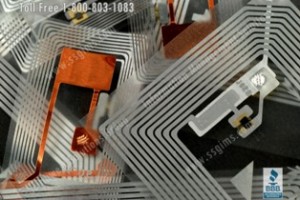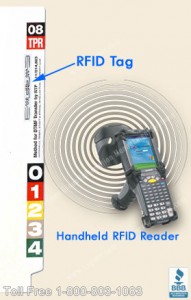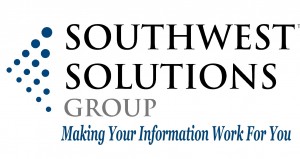Technology
Radio Frequency Identification (RFID) File Technology
 RFID (Radio Frequency Identification) Overview
RFID (Radio Frequency Identification) Overview
Today, barcodes are used for identification in almost all areas of business. Typically about 30% of barcode technology is used in the retail industry. The remaining 70% is used in the government, medical, manufacturing, military, and legal fields. RFID (Radio Frequency Identification) is rapidly increasing in popularity because of its ability to provide accurate and instantaneous information of current and historic locations of items.
 RFID Tracking Advantage
RFID Tracking Advantage
The primary difference between barcode label and RFID tracking technologies is barcode labels require a line of sight for infrared beams to scan a barcode label. RFID utilizes radio frequencies (radio waves) to automatically read small microchips or “tags”. RFID tags have antennas that transmit information to an RFID reader. The RFID reader converts the radio waves into digital data to a computer software interface, providing current and historic tracking information of items as well as their exact locations.
 RFID Proximity Reading
RFID Proximity Reading
Unlike barcode labels that require a line of sight access for scanning, RFID radio tags are read whenever the scanner is within a few feet – even if there are obstructions in the way. This proximity reading capability means you can scan files, boxes, or other items with a handheld or a fixed RFID reader device. These scanning devices automatically log hundreds of tag signals per second from a distance, without the need to physically see the RFID tag. The location data of tagged file folders and other items are instantaneously collated and viewed as a report using a RFID software interface. This means rooms of files or other tracked items can be scanned easily and quickly.
RFID readers are small enough to be installed at many “choke points” throughout your facility for file tracking. Readers can be located on doorways or in individual offices within your organization. When you log in to check the location of a record, you will be able to see where it is located and any stops the record has made along the way.
 Advantages of RFID
Advantages of RFID
Whether you are tracking file folders, record boxes or asset items, RFID technology offers speed and accuracy compared to barcode label tracking. Other benefits to consider are:
- Inventory Control Efficiency: Because line of sight is not required to read RFID tags items can be inventoried no matter where the tag is placed on the file or where the file is within a given area.
- Locating Misplaced Items: Misplaced file locations can be easily pinpointed by using a handheld RFID device. Simply enter in the file number and walk through the file room or office area. The handheld device will increase signals the closer you get to the misplaced file.
- ROI (Return on Investment): although higher in cost initially the cost of ownership will go down if the implementation provides a significant method to improve the business process.
- Damage Vulnerability minimized: RFID tags cannot be damaged like barcodes
Successful RFID Implementation
The key to successful RFID implementation is in understanding and identifying your objectives. Southwest Solutions Group’s Information Management Division provides the experience and knowledge to help you analyze your current processes. Call us today at 1-800-803-1083 to find out how RFID technology can streamline your business processes.
Ensuring SUCCESSFUL Barcode, RFID and Digital Implementation

Barcode, RFID & Digital Technology Plan is KEY to SUCCESS
Innovation tracking and management technologies can make a huge difference in your bottom line whether it is for inventory, assets or records and information. The key to a successful implementation is identifying and improving the related business processes. Attaching a barcode or RFID tag to an item or putting document through a scanner is only a small part of the solution. Solution providers should be able to perform a survey and analysis of your existing system to first identify the root of deficiencies and provide a full life cycle overview. Process improvement in partnership with innovative technologies is the key to your return on investment and bottom line improvements. It is also important to identify which technology is best for your business function. Asset Management, Inventory, Digital Document and Archive Management are key business units that can benefit from a single and/or a combination of technologies and many systems can be expanded to include multiple departments or enterprise-wide. Technology can be a powerful tool when implemented to enhance your overall business function and work flow.
Click here to learn more about our Total Solution Integration & Implementation Services



